Bombastus kept a devil's bird
Shut in the pummel of his sword,
That taught him all the cunning pranks
Of past and future mountebanks.
These lines are taken from Canto Three of Samuel
Butler’s Hudibras, and refer to the reputation Paracelsus had acquired in
the popular imagination in the century following his death. In a note in the
1744 edition of Hudibras, Zachary Grey writes of Paracelsus’s pioneering
use of opium,
“Opium being cold in the fourth Degree the Ufe of it, through fear, was very much neglected; infomuch that by his Rafhnefs and Boldnefs in the Ufe of thefe, he performed many Cures, which the regular Phyficians could not do.”
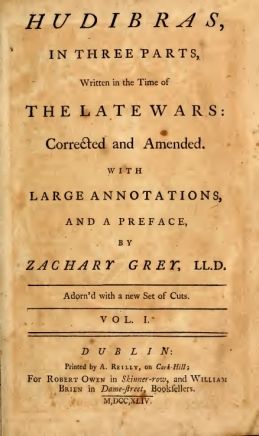 |
| Samuel Butler - Hudibras - 1744 edition |
The legend is that, rather than a ‘devil’s bird’,
Paracelsus kept opium in the handle of his sword, opium that he had acquired on
a visit to Constantinople. He discovered that the alkaloids in opium could be
effectively dissolved in alcohol, which is the basis of a tincture called by
Paracelsus labdanum, and by later physicians laudanum, from the
Latin laudare – ‘to praise’.
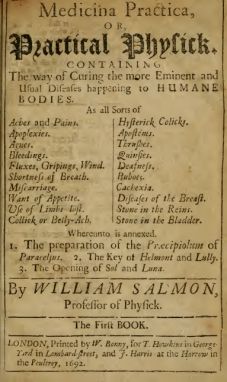 |
| Paracelsus / William Salmon - Medica Practica - 1692 |
Paracelsus’s labdanum also contained
amber, musk, gold leaf, crushed pearls and other substances in addition to the
opium but nevertheless he used it to effect many cures. In October 1601, a
diary entry by John Manningham says,
“There is a certaine kinde of compound called Laudanum which may be had at Dr, Turner's apothecary in Bishopsgate streate; the virtue of it is verry soverraigne to mitigate anie payne; yt will for a tyme lay a man in a sweete trans, as Dr. Parry told me he tried in a fever and his sister Mrs. Turner in her childbirth.”
 |
| Thomas Sydenham |
In the 1660s, Dr
Thomas Sydenham produced a variation on the recipe, using sherry wine, opium,
saffron, cinnamon and cloves, and Sydenham’s Laudanum became an early
proprietary medicine. Sydenham wrote,
“And here I cannot but break out in praise of the great God, the Giver of all good things, who hath granted to the human race, as a comfort in their afflictions, no medicine of the value of opium, either in regard to the number of diseases that it can control, or its efficiency in extirpating them.”
 |
| Thomas Sydenham - Praxis Medica - 1695 |
Sydenham was not alone in his eulogizing of opium, it
was regarded as a panacea for all ills and prescribed freely for whatever ailed
you. Sometimes, things did not go according to plan, as in the case of a
Scottish edition of Buchan’s Domestic Medicine. This was an immensely
popular home guide, running to nineteen editions in the author’s lifetime,
amounting to 80,000 copies, but the edition in question misprinted one
prescription that recommended one hundred drops of laudanum as one hundred ounces
of the drug.
 |
| William Buchan - Domestic Medicine - 1825 edition |
A similar sort of mistake may have been responsible for the
death of the French philosopher Voltaire. Even at the age of eighty-three,
Voltaire continued to work with feverish intensity and one night, as he wrote
long into the small hours, he drank ten or twelve cups of coffee to keep
himself awake, (in his youth, Voltaire would drink up to thirty cups a day but
in old age he took no more than three cups). The stimulant was too much for him
and he found it impossible to sleep properly, so when a friend recommended
laudanum, a servant was sent to an apothecary to purchase a bottle.
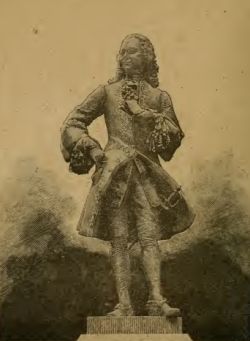 |
| Voltaire |
The servant
was not told how much to bring, and Voltaire drank the lot and went to bed. The
following day he was found to be suffering from the overdose and although a
doctor was sent for, he could do little and the philosopher died several days
later. Laudanum was prescribed for headache, it was prescribed for toothache,
it was prescribed for any ache. It was consumed in vast quantities by men, women
and children, it was given to babies to make them sleep and relieve teething
pains. It was so widely used, the pharmacopoeias of the eighteenth and
nineteenth centuries are frightening to read, so quickly and readily do they
resort to opiates.
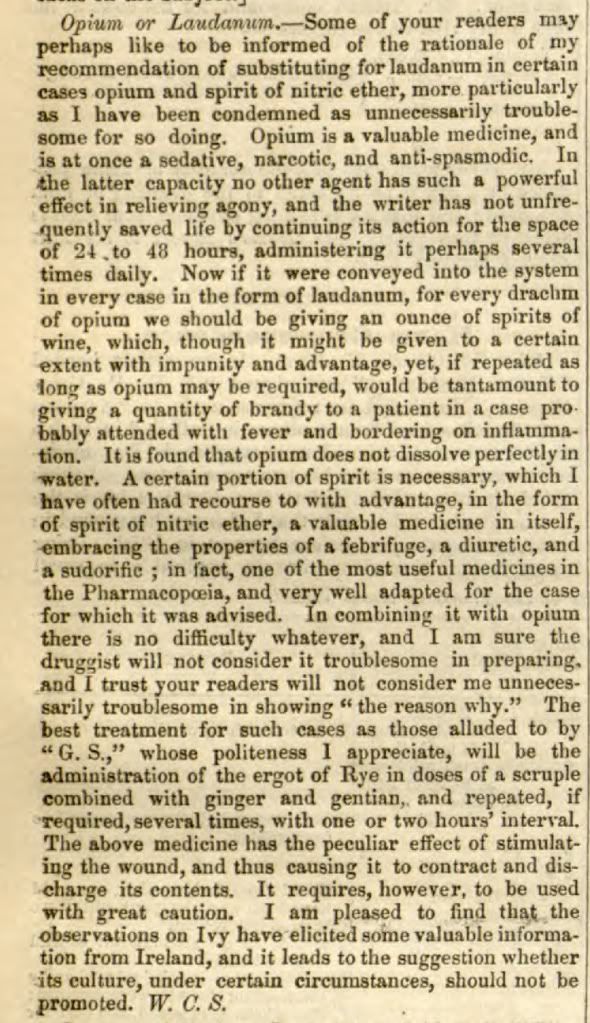 |
| The Gardener's Chronicle and Agricultural Gazette - April 9 1853 |
And the rest of the animal kingdom was not forgotten – a
letter in The Gardener’s Chronicle and Agricultural Gazette of April 9th
1853 advocates the use of laudanum for ailing sheep and lambs. In 1804,
morphine, another opium derivative, was first isolated and distribution began
in 1817, with commercial sales starting ten years later, but laudanum remained
the drug of choice as it was a liquid and easily taken, either directly or
mixed into another fluid, and was freely available over the counter, without
the need of a doctor’s prescription. It was also highly addictive.
 |
| Laudanum - Edinburgh Dispensatory - 1796 |
A list of
the great and the good of Victorian society will include a very high proportion
of laudanum users – Byron (inevitably), Shelley, Keats, Dickens, Wilkie
Collins, Thomas de Quincey, Lewis Carroll, Florence Nightingale, Queen Victoria
et al. Coleridge was an addict – he favoured Kendal Black Drop, a
preparation of opium, vinegar, sugar and spices, which he mixed with his
claret. Dante Gabriel Rossetti mixed his laudanum with whisky; his wife,
Elizabeth Siddal, committed suicide with an overdose of laudanum.
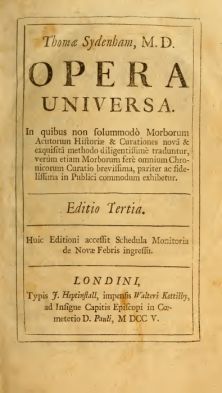 |
| Thomas Sydenham - Opera Universa - 1705 |
Because of
its ubiquity, we will never know how many ‘accidental’ overdoses of laudanum
were actually suicides or murders, but to give some idea, in 1837-38, there
were 543 cases of poisoning brought before the coroner’s court. Of these, 184
were due to arsenic poisoning, whilst 200 were attributed to opium
preparations, 133 specifically due to laudanum; of these 200 deaths, 64 were
children and 41 of these (one fifth of the entire total) were overdoses of
cordials or medicines administered to the children by their mothers or nurses.
These are investigated cases, so who can guess how many children died, or were
got rid of, with laudanum?
Tomorrow, from bad to worse – the extent of Victorian
drug use.
Those of you who are kind followers of this blog may be interested to know that this is my 400th post. Thank you for continuing to return.
No comments:
Post a Comment